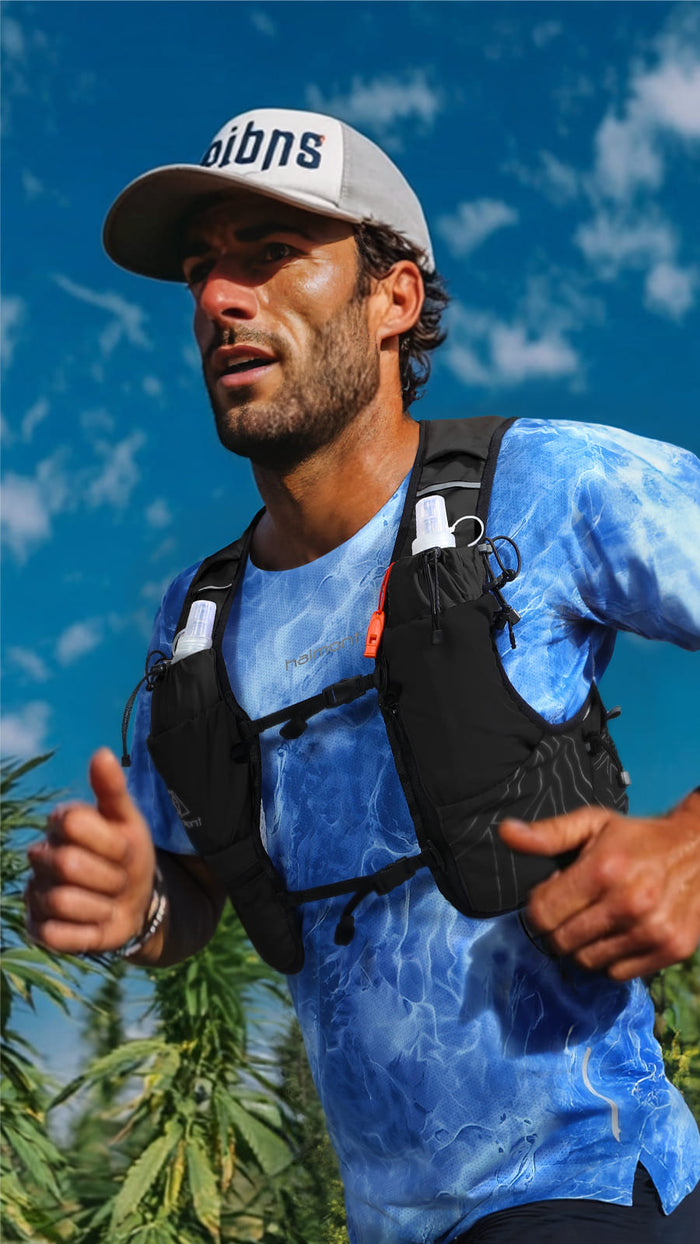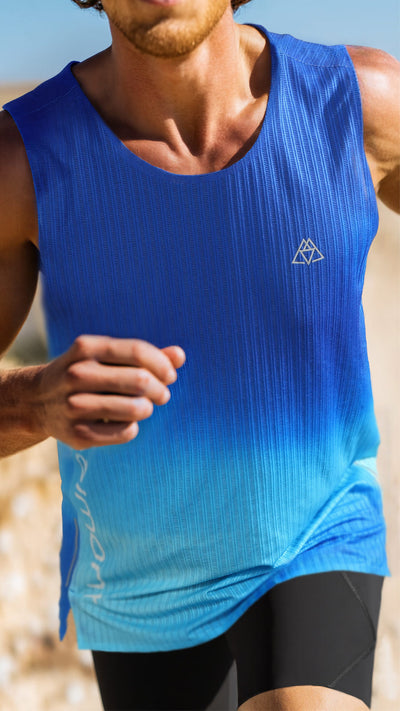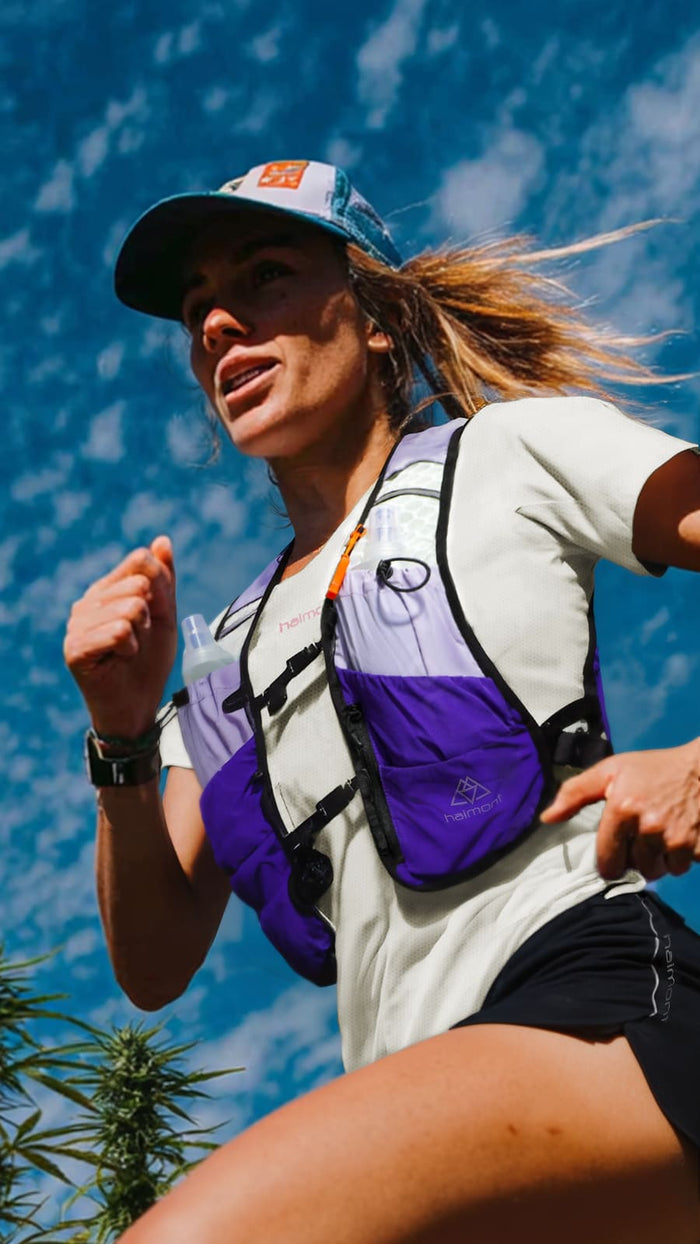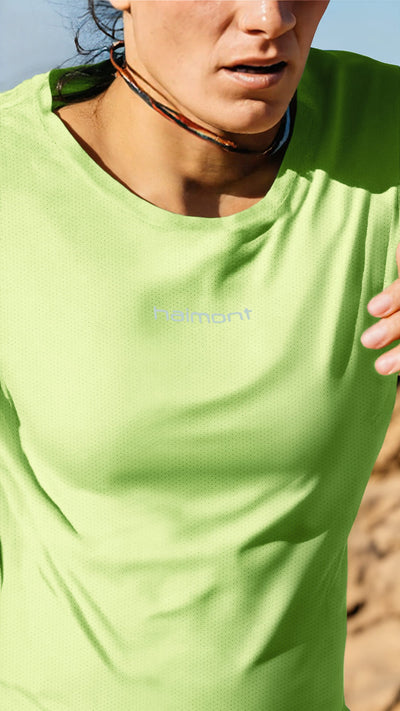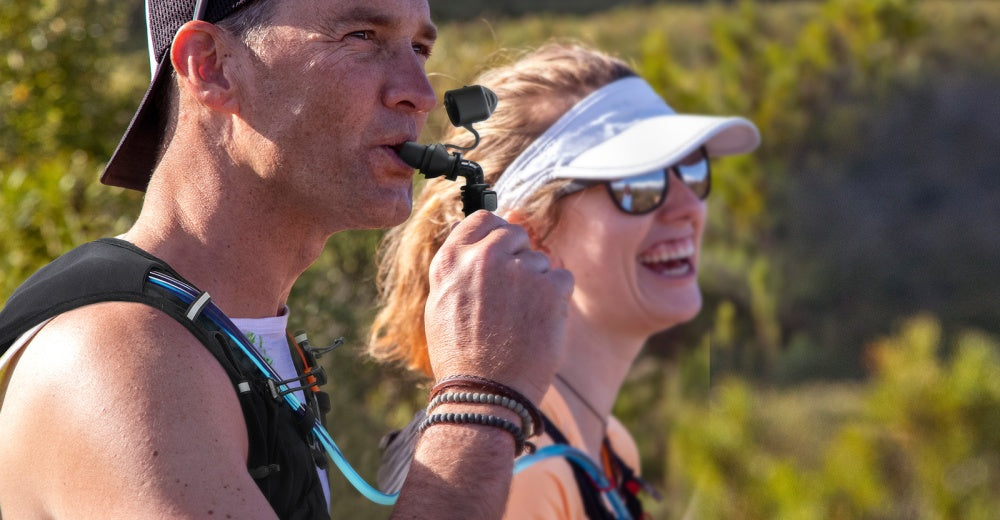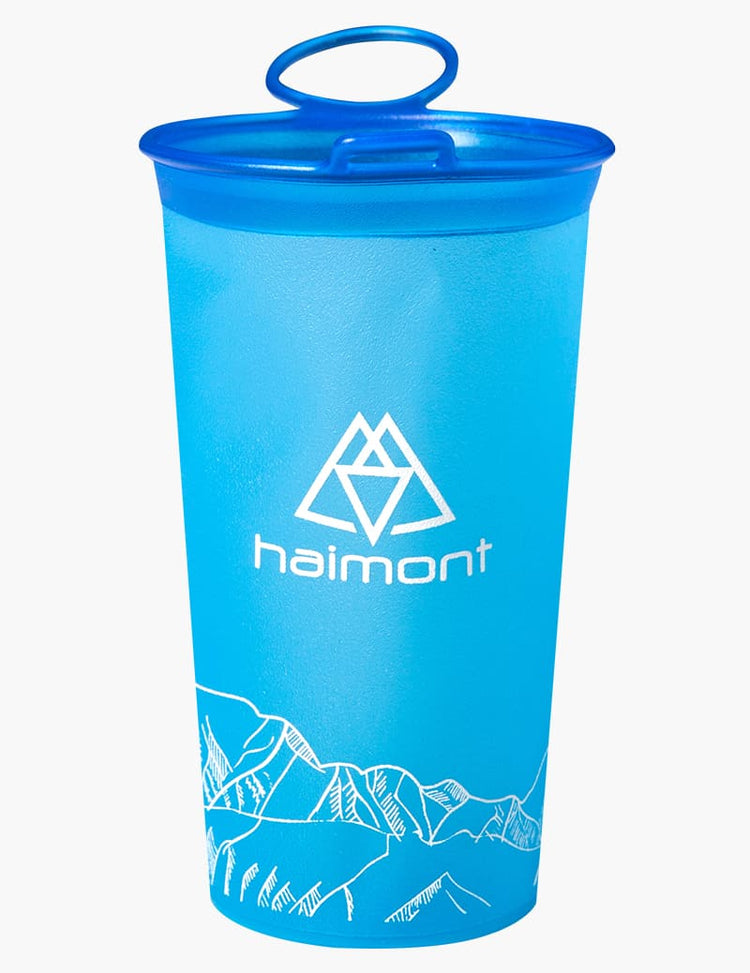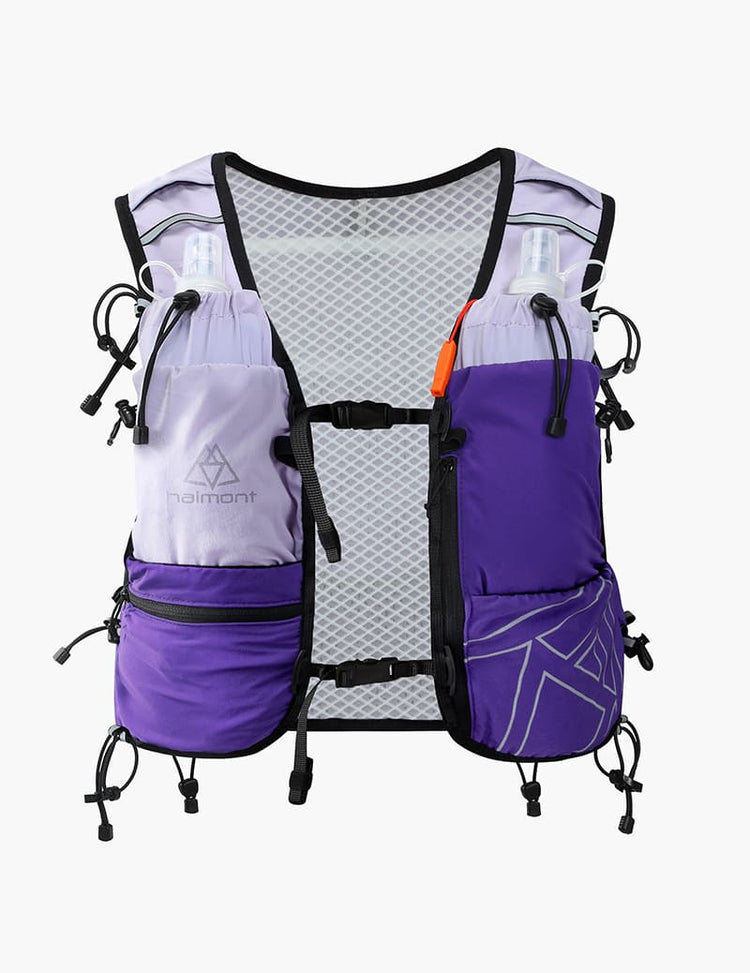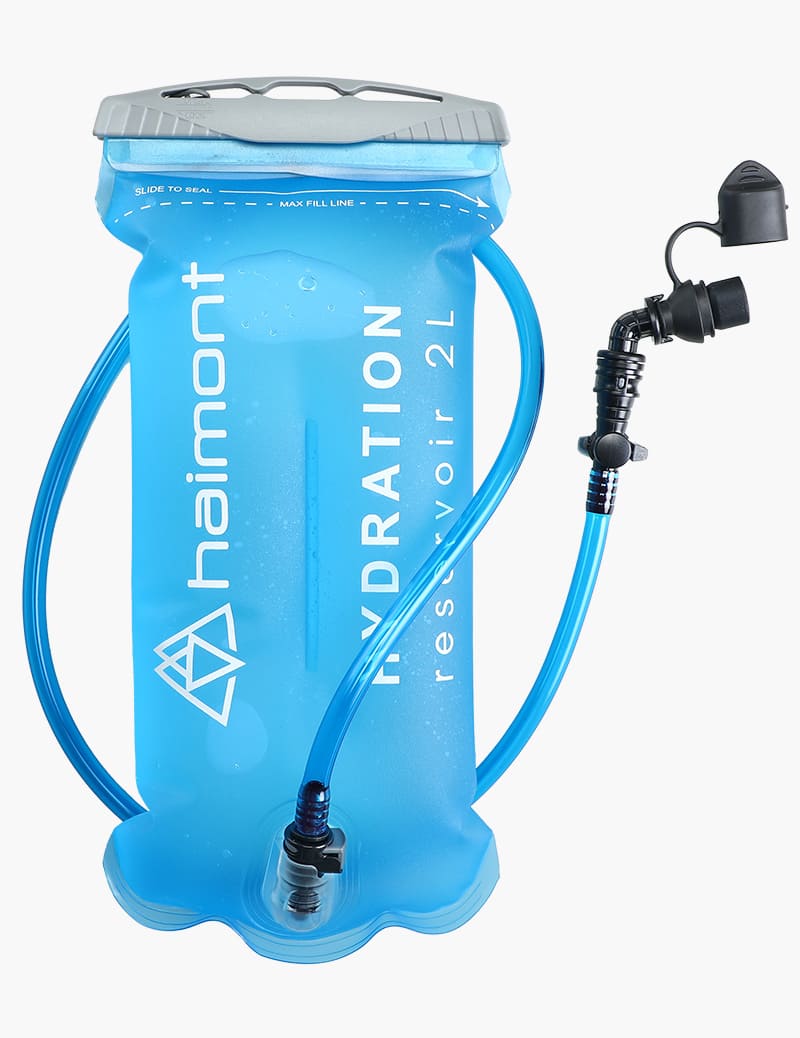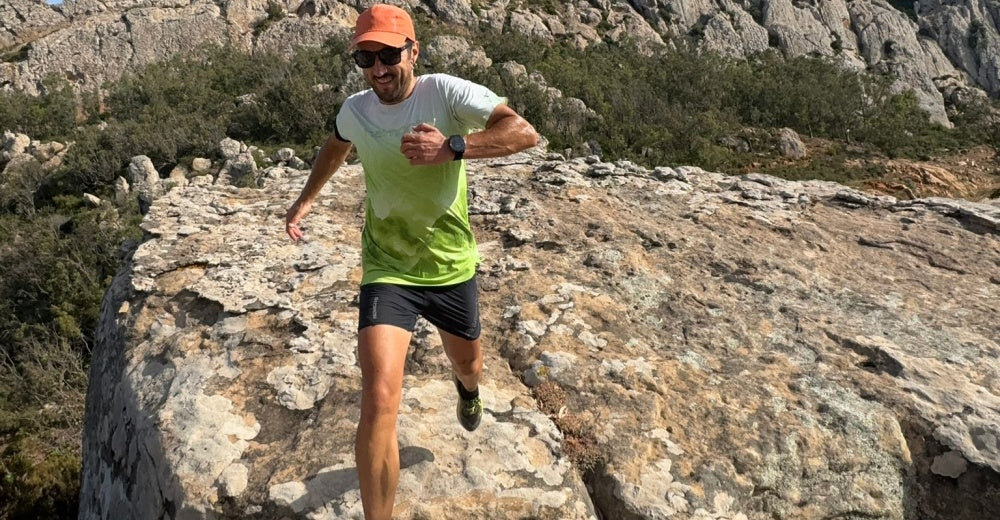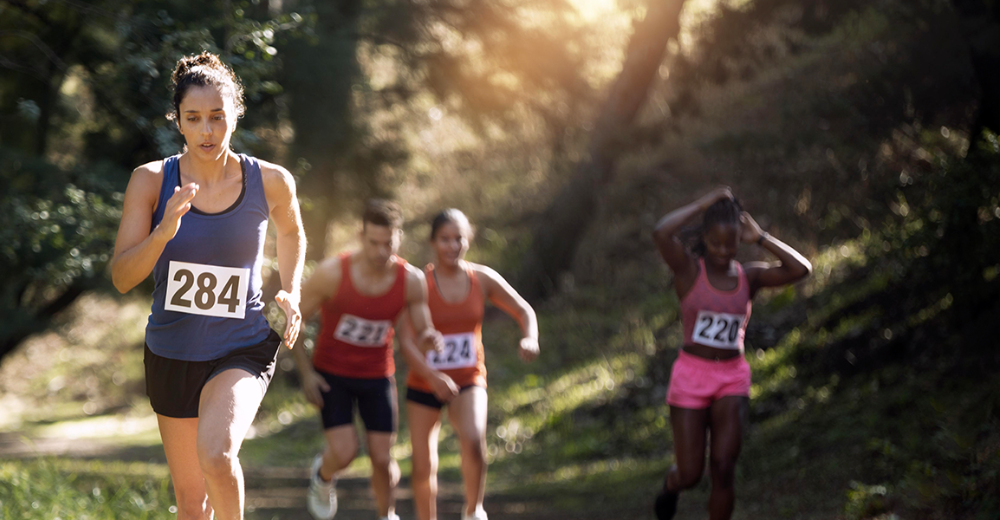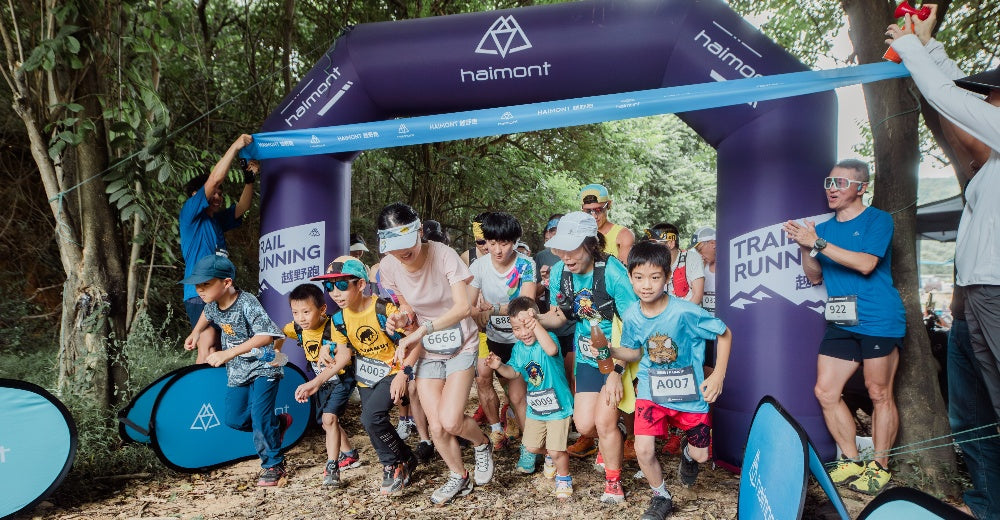Table of contents
When the first rays of morning light pass through the forest, we carry our equipment and set off on the mountain road; trail running is a journey close to nature. In this pristine mountain forest, valley, and rock slope, we feel the pulse of the earth, the whisper of the wind, and the gentleness of the water. However, the closer we are to nature, the more we should realize that every step we take should not bring a burden to it.
In recent years, trail running has become more and more popular as a sport that combines adventure and self-challenge. But the problems that come with it have gradually emerged: the use of disposable plastics, carbon emissions caused by event transportation, track garbage left behind, and vegetation trampling. These have made "harmonious coexistence between humans and nature" a topic that must be faced.
The good news is that more and more runners and event organizers have begun to take action-choosing sustainable materials, reducing carbon footprints, and advocating the concept of leaving no trace. As a sports brand closely related to mountains and forests, Haimont has always adhered to the concept of "lightweight and environmental protection first", and is committed to integrating the spirit of environmental protection into the design of every trail running equipment.
Step lightly: Start with transportation
The charm of trail running often lies in its distance from the hustle and bustle and close to the mountains. But this also means that many events are held in remote mountainous areas, national parks or nature reserves. How to reach these venues has become the first step for every runner on the road to environmental protection.
According to research, the carbon emissions generated by runners traveling to the event site are one of the main environmental burdens of a trail run. Especially when the event attracts a large number of foreign or even multinational runners, the choice of transportation has a huge impact on the overall carbon footprint of the event.
Carbon reduction travel, start with you and me
1. Prefer local events and reduce long-distance travel
Instead of chasing far away every year, it is better to look at the good tracks "at home". Many regional events are equally professional in route design, supply settings, and event atmosphere, and are more green and sustainable. Supporting local events is also supporting regional ecological and environmental management.
2. Carpooling, traveling together is more environmentally friendly
Asking runners to carpool not only saves costs, but also reduces the number of vehicles and reduces carbon emissions. In some events, organizers will also provide official carpooling platforms or green transportation incentive mechanisms to support environmentally friendly travel methods.
3. Public transportation is prioritized, and green routes are extended
If the event location is close to a town, you can consider taking a train, long-distance bus, etc. to arrive, and then take a shuttle bus, shared bicycles, or walk to the starting point. Nowadays, more and more events are cooperating with environmentally friendly transportation services and setting up "environmentally friendly route guidance" to help players plan more sustainable travel plans. 4. Long-distance travel, carbon neutrality compensation.
Suppose you need to participate in cross-provincial or cross-national competitions. In that case, it is recommended to purchase carbon neutrality services through third-party platforms, such as tree planting projects or ecological protection plans, to make up for the carbon footprint caused by travel. Although this method cannot directly reduce emissions, it can provide substantial support for the environment.

Travel light: Choose environmentally friendly equipment
Trail running emphasizes "lightness", not only in terms of weight, but also in terms of "light burden" on the environment. From underwear, vest bags to soft water bottles, every piece of equipment you carry contains opportunities for environmentally friendly choices.
In the life cycle of equipment manufacturing, the selection of raw materials, production processes, frequency of use, and waste treatment will directly affect carbon emissions, resource consumption, and ecological footprint. The good news is that more and more brands (including Haimont) have invested in the research and development and design of environmentally friendly equipment, committed to achieving a win-win situation of performance and sustainability.
How to wear environmentally friendly?
1. Material selection is more "green"
Prioritize recycled fabrics (such as recycled polyester from recycled PET bottles), organic cotton or PFC-Free non-fluorine-free water-repellent treated clothing. These environmentally friendly materials effectively reduce the pressure on land and water resources without sacrificing functionality.
2. Use more durable and reduce the frequency of replacement
Durability itself is the core of environmental protection. trail running equipment often faces harsh environments such as wind, rain, mud, and friction from branches. Choose equipment with a sturdy structure and tear-resistant fabric to reduce frequent replacement due to wear and tear, that is, to reduce resource waste.
Haimont Trail running Vest Pack uses high-strength ultra-light nylon. The zipper, stitching, and mesh have all passed durability tests to ensure stable performance under high-intensity events.
3. Reject disposable items and start with soft bottles
In competitions and training, bringing your own reusable soft bottles, water bags, or folding cups is the most direct environmental protection action. It not only reduces plastic waste, but also facilitates the control of the rhythm of water replenishment and improves efficiency.
4. Disassembled and repairable, extending the life cycle of equipment
Choose equipment with disassembled structure and replaceable accessories, such as soft bottle nozzles, backpack buckles, chest buckle elastic system, etc. Once damaged, they can be replaced separately instead of scrapping the whole piece. Haimont is also exploring the launch of "parts replacement service" in the future to help runners extend the service life of equipment.
5. Packing is also worth paying attention
Environmentally friendly equipment is not only reflected in the product itself, but also in the transportation and packaging process. For example, reducing plastic packaging, using recyclable cartons, and centralized delivery are all manifestations of brand responsibility. Haimont is currently gradually transitioning to 100% degradable packaging bags and recycled cartons to achieve full environmental protection from factory to user.
The choice of environmentally friendly equipment is the most gentle respect for nature. Every time you go light, it is not just for speed, but also for a clean future in the mountains and forests. You can vote for a more sustainable future with every purchase; and we, Haimont, will continue to respond to this trust and expectation with our products.
Leave no trace: Behavior during the race is more important
Among trail runners, there is a widely circulated environmental declaration: "Take nothing but pictures, leave nothing but footprints."
The environment in the mountains is originally fragile. If a trail running race with dense traffic lacks environmental awareness, it may cause a series of ecological problems such as vegetation destruction, water pollution, and garbage residue in a short period of time. Therefore, it is more important to develop good environmental behavior habits during the race than any "slogan shouting".
Environmental protection action guide during the event
1. Not littering is the basic bottom line
Energy gel bags, salt pill shells, paper towels, water bottles... These are the most common "abandoned items" on the trail track. Even if some garbage is degradable (such as banana peels), it may take weeks or even months to completely decompose in the natural environment, and it poses a potential risk to wild animals.
→ Suggestion: Use a "portable garbage bag" to collect used supply packaging, paper towels, etc. in the small auxiliary compartment of the equipment bag, and dispose of them uniformly after the race. Some events will also distribute small, retractable "garbage bag clips", which are practical and environmentally friendly. Haimont has specially designed an "environmentally friendly recycling bag" that can be used with the vest pack. It is made of waterproof and lightweight material, with sufficient capacity without affecting the running rhythm. The recycling bag can be quickly attached to the belt on the side or back of the Trail series vest pack, making it convenient for runners to collect garbage while running without stopping.
2. Bring your own cups, refuse disposable supply cups
More and more events have clearly announced "no paper cup supply stations", encouraging runners to bring their own folding cups, soft bottles and other containers to replenish water. This not only reduces the waste disposal pressure of the event, but also improves the efficiency of replenishment and streamlined experience.
3. Follow the track, don't take shortcuts
Runners "cut the route" to save energy or shorten the distance, often trampling on unhardened grass, woodland, and mud, causing irreversible damage to soil structure and vegetation, and even affecting local soil and water conservation and animal and plant habitats.
→ Remember: The world outside the track does not belong to this race. Every set route has its ecological and protection considerations.
4. Keep low noise and respect wildlife
Speaking loudly, playing music or honking frequently in the wild will interfere with the activity area of wild animals and even cause changes in long-term migration routes. Some nature reserves set up "silent sections" for events, which is a basic respect for the ecology.
→If you use Bluetooth music headphones, please control the volume so as not to disturb others or the ecology.
5. Going to the toilet is also environmentally friendly
In mountain tracks without fixed toilets, if you need to "go to the bathroom", you must follow the following rules: at least 60 meters away from water sources;
Use biodegradable toilet paper or carry waste paper bags with you.
Use environmentally friendly cat litter or dig a pit to bury feces (if conditions permit);
Some events provide portable environmentally friendly toilet bags, which can be taken to the CP point for centralized treatment after use.

Environmental protection is not just "don't do anything", but also "what to do"
Environmental protection behavior is not a negative "can't do this, can't touch that", but a more conscious and powerful runner's quality. A true trail runner knows how to get along with nature and how to turn the event into a cooperation between man and nature, rather than an invasion.
Haimont encourages every runner to carry an environmental protection heart in addition to equipment. We are also working with some events to promote the "Green Runner Action Guide". We hope that every future run will leave a mark of environmental protection spirit without leaving any trace.
Runners' environmental awareness is certainly important, but to truly promote a sustainable trail running ecology, it is far from enough to rely on individuals alone. As a bridge connecting nature, runners and society, the event organizers are responsible for designing green events in a more systematic and sustainable way.
From event planning to supply settings, from publicity methods to material recycling, every detail can be the starting point of "green transformation". In recent years, more and more responsible trail running events have begun to join the **Green Race Pledge** to explore how to reduce damage to the ecological environment while ensuring the participating experience.
What can a "green event" do?
1. Plastic reduction action: Say goodbye to disposable items
- Do not provide disposable paper cups and plastic bottles, and fully advocate bringing your own soft bottles and foldable cups
- Provide raw food supplies (such as whole bananas and orange chunks) to reduce packaging waste
- Use large-capacity barreled drinking water systems instead of small bottles of packaged water
- Use recyclable or recycled fabrics for event T-shirts and material bags
2. Green supply chain: Start from the source
- Prioritize the purchase of local food and materials to reduce transportation emissions
- Select environmentally certified equipment brands as partners, such as PFC-Free certified, water-repellent and degradable fabric equipment manufacturers
- Competition materials (race bags, medals, bibs) focus on durability and commemoration to avoid the phenomenon of "throwing away after the race"
3. Low-carbon event operation: systematic emission reduction
- Provide shuttle buses or encourage players to carpool, and set up a "low-carbon reward mechanism"
- The entire competition adopts digital operation: electronic road books, electronic score certificates, online registration and receipts
- Support carbon neutrality compensation projects, such as donating money to plant trees according to the number of registered people, and supporting local ecological protection funds
4. Environmental education and guidance: influence is more important
- Pre-race push "Environmental Protection Participation Guide" to clarify green rules and advocated behaviors
- Set up an environmental protection volunteer team to help guide garbage sorting, recycling and post-race cleanup
- Invite ecological experts or environmental protection organizations to participate in pre-race lectures or on-site interactions to enhance runners' environmental awareness
- Set up a "Green Runner Award" or special commemorative medal for runners with excellent environmental performance to encourage sustainable behavior
5. Leave no trace after the race: give back to nature
- Organize post-race cleanup activities to ensure that every track is as clean as before
- Set up a "1 km ecological restoration fund": according to the number of finishers, each person will fund 1 km of regional ecological monitoring or vegetation restoration
- Work with local environmental protection organizations for a long time to jointly build a "track protection mechanism" - not just leave after the event, but leave a long-term influence

Haimont Initiative: "A race is also an ecological declaration"
As a trail running equipment brand, Haimont has always believed that a truly excellent race can not only run smoothly, but also let nature breathe. We encourage the joint development of low-carbon equipment package solutions, green race material recycling mechanisms, and co-branded environmental protection souvenir designs with event organizers.
We are also launching the [Haimont Green Event Co-construction Plan] to support events that are willing to practice sustainable concepts by providing:
- Free environmental equipment consulting services
- Brand co-branded environmental commemorative materials support
- Exclusive "Green Event Cooperation Badge" certification program
Real trail running is not about conquering the mountains, but about dancing with nature. Events are a window for more people to see the possibility of environmental protection; and every "green action" is a gentle response from runners, organizers and brands to the mountains and forests.
From runner to guardian: Finishing the race does not mean the end
Trail running is not only a physical challenge, but also a way to deeply connect with nature. As we run through the mountains and forests again and again, accompanied by wind and rain, and talking to the soil, we will gradually change from "users" to "guardians".
Many runners used to think that environmental protection is the business of the organizer, the brand, and some extreme environmentalists. But in fact, trail runners are one of the most direct and influential ecological protection forces.
Because we have walked along the ridge of the mountain and seen the trails trampled down by people; we have seen plastic bags floating in the woods during the race, and we have also seen wild deer timidly avoiding people in the distance. We are witnesses of the mountains and should also be leaders of change.
After running, environmental protection actions have just begun:
1. Share environmental protection stories to drive more people to awaken their consciousness
Every competition, every training, and every environmental protection behavior are worth spreading. Sharing how you can "go light and run without leaving a trace" through social platforms, running group exchanges, personal blogs and other channels can subtly influence more people to join the ranks of environmental protection.
→ Your environmental protection suggestions may change the habits of a novice runner, or may inspire a change in the track.
2. Return to the track and become an "environmental volunteer runner"
More and more runners will return to the track after the race to pick up garbage that may be left along the way, or participate in the road cleaning activities organized by the local organization. This is not only to clean up the environment, but also a sense of ritual of "respecting the track".
3. Become an environmental communicator or advocate
- Make green improvement suggestions to the event organizer (such as setting up garbage recycling points, using electronic route maps, and distributing reusable items)
- Feedback product environmental design suggestions to the brand (such as excessive packaging, low recyclability and other issues)
- Invite running groups to participate in environmental protection co-construction activities, such as "running + picking up garbage" Plogging training, environmental protection lectures, etc.
→ Environmental protection is not just "one person does a lot", but "many people do a little", and every bit is important.
4. Extend the life of equipment and reuse
- After running a race, many people will put away or even discard the race T-shirts, number cloths, and commemorative bags. In fact, you can give them new life: make the number cloth into a wall hanging to commemorate your environmental protection race journey
- Donate unused equipment to mountain teenagers or novice runners
- Use the "old equipment recycling program" developed by Haimont to exchange old for new and extend the life value of products
5. Support environmental protection organizations and continue to influence the world
Choose to donate part of your bonus or equipment income to ecological public welfare projects such as environmental protection organizations and the National Park Foundation. You don't have to become a full-time environmentalist, but you can become an environmental supporter who continues to speak out and take action.
Environmental protection is a long-distance race
Environmental protection has never been a "short-distance race". It is more like a trail ultramarathon without a finish line: the scenery is changing, the route is more dangerous, but as long as the direction is right, every step is of great significance.
As a brand, Haimont knows that environmental protection is a long-term commitment. We believe that trail running should not only leave behind the glory of PB, but also clean air, intact vegetation and undisturbed ecology.
We will continue to support runners to become "post-race guardians", and we also hope that after the next race, you can continue to stay in the mountains and forests in another way - not running, but guarding.


